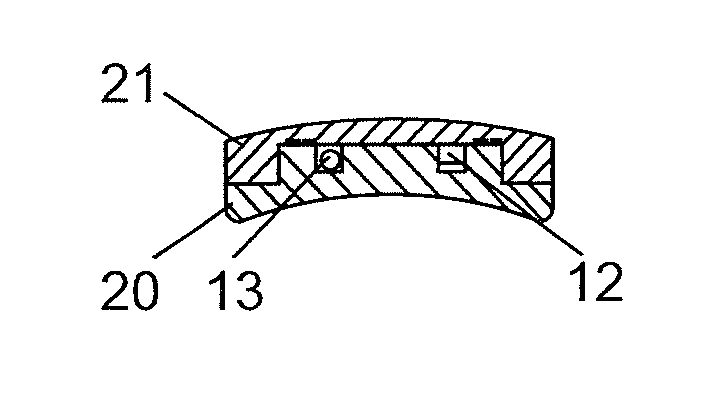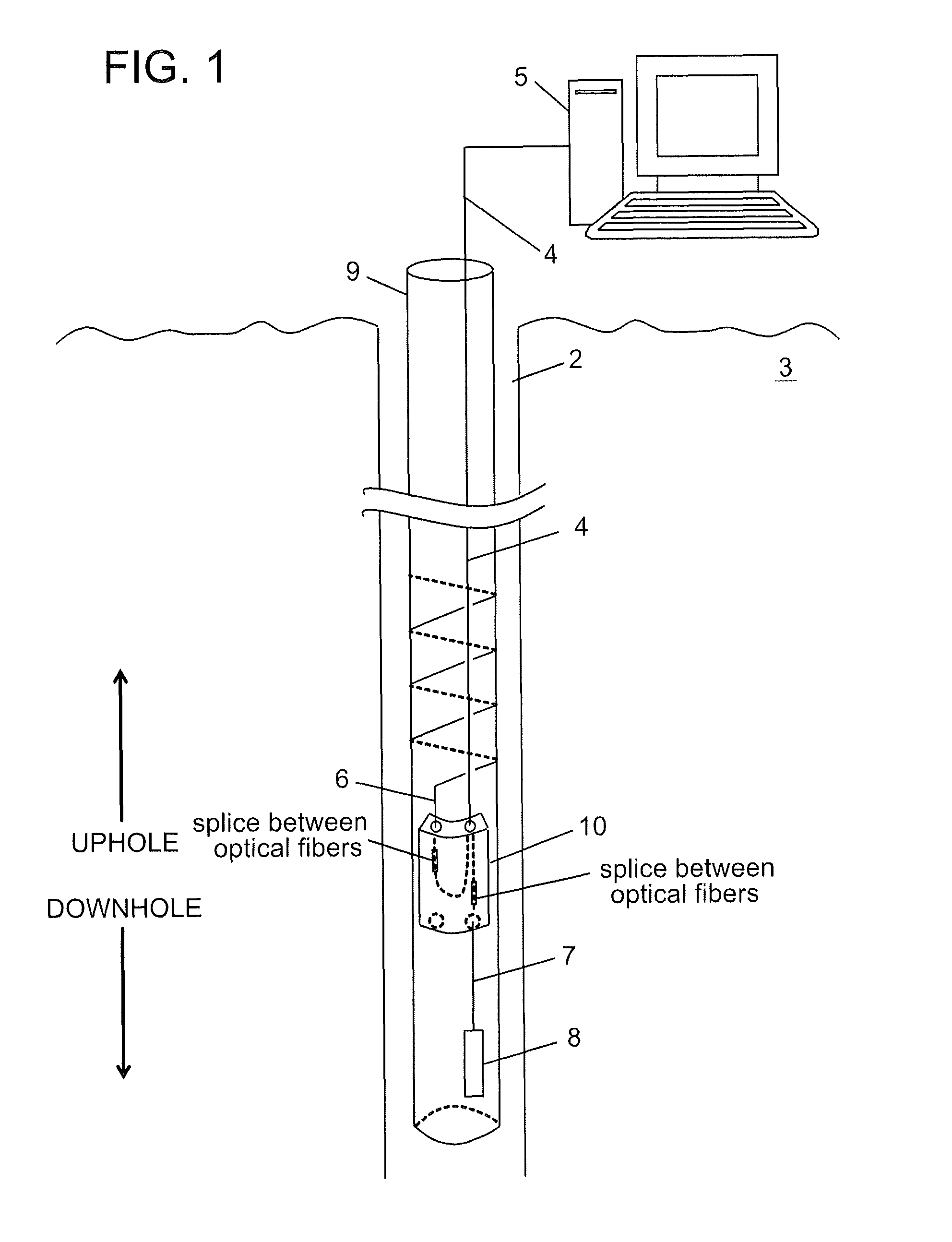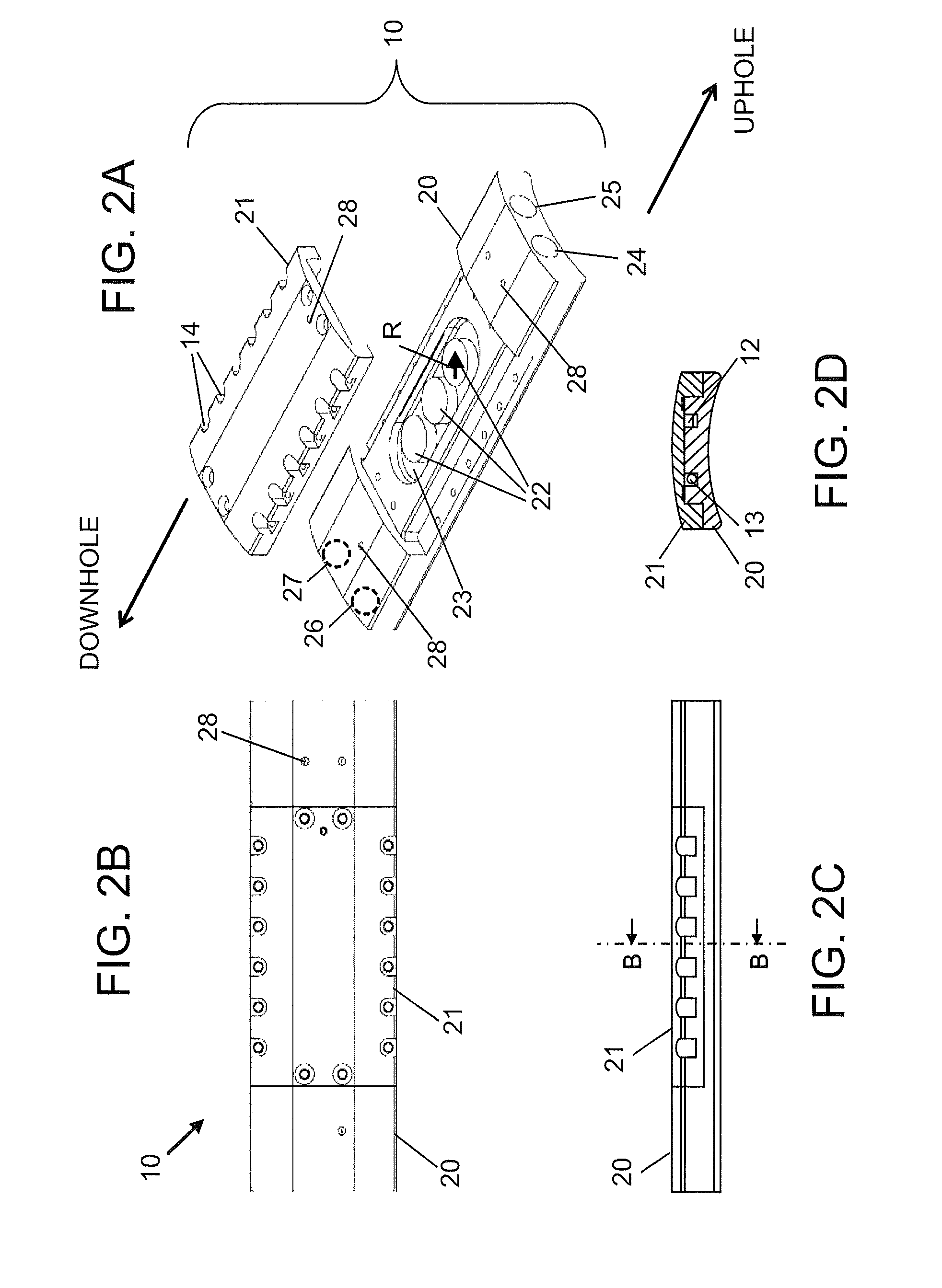Method of deployment for real time casing imaging
a casing and imaging technology, applied in the field of fiber optic sensor imaging, can solve the problems of high stress, high temperature, high pressure, and harsh environment of casings disposed in boreholes
- Summary
- Abstract
- Description
- Claims
- Application Information
AI Technical Summary
Benefits of technology
Problems solved by technology
Method used
Image
Examples
Embodiment Construction
[0020]Disclosed are exemplary embodiments of techniques for deploying a fiber optic communications cable and a fiber optic strain sensor (or any fiber optic sensor) in a borehole penetrating the earth. The fiber optic strain sensor is configured to be in optical communication with a fiber optic processing unit via the fiber optic communications cable. Because the strain sensor is separate from the fiber optic communications cable, a splice is required to couple the fiber optic strain sensor to an assigned optical fiber in the fiber optic communications cable. The techniques, which include method and apparatus, call for installing the splice below the strain sensor such that the splice is disposed in the borehole before the strain sensor. In this manner, the fiber optic strain sensor can be tested or made operational before being disposed in the borehole.
[0021]The techniques disclosed herein use an optical fiber splice housing for protecting the splice between two optical fibers from...
PUM
| Property | Measurement | Unit |
|---|---|---|
| pressure resistant | aaaaa | aaaaa |
| length | aaaaa | aaaaa |
| curvature | aaaaa | aaaaa |
Abstract
Description
Claims
Application Information
 Login to View More
Login to View More - R&D
- Intellectual Property
- Life Sciences
- Materials
- Tech Scout
- Unparalleled Data Quality
- Higher Quality Content
- 60% Fewer Hallucinations
Browse by: Latest US Patents, China's latest patents, Technical Efficacy Thesaurus, Application Domain, Technology Topic, Popular Technical Reports.
© 2025 PatSnap. All rights reserved.Legal|Privacy policy|Modern Slavery Act Transparency Statement|Sitemap|About US| Contact US: help@patsnap.com



